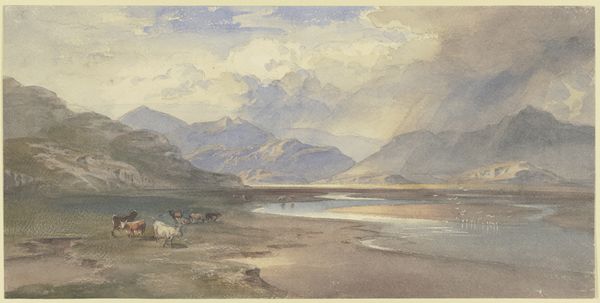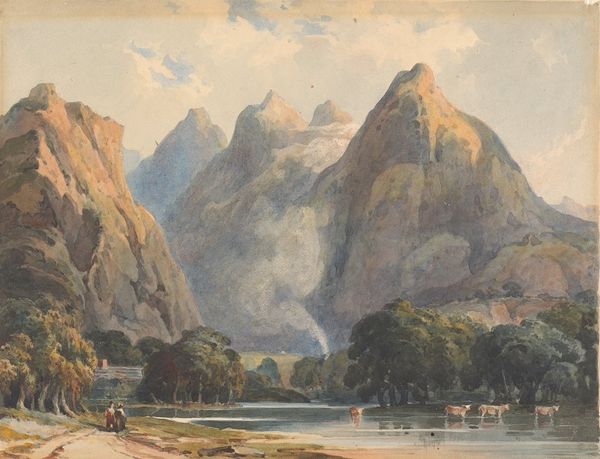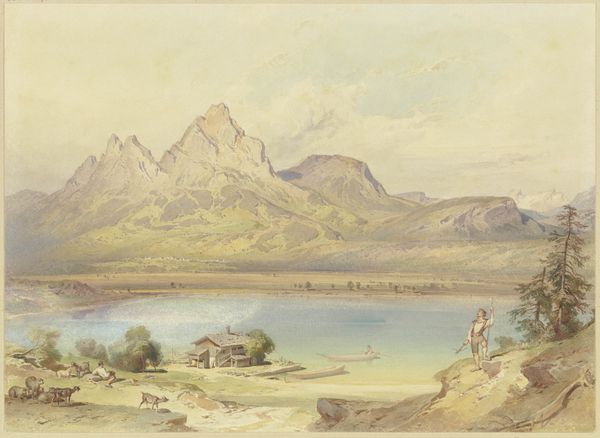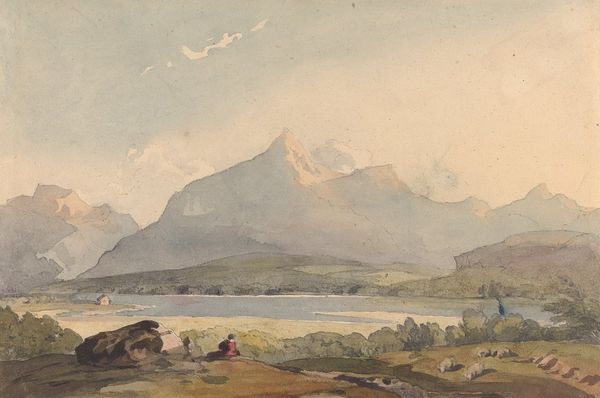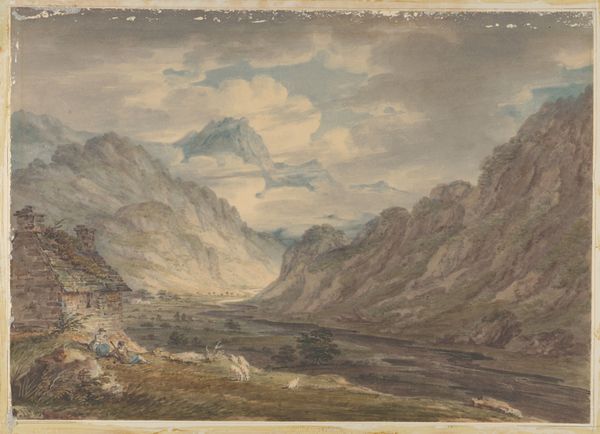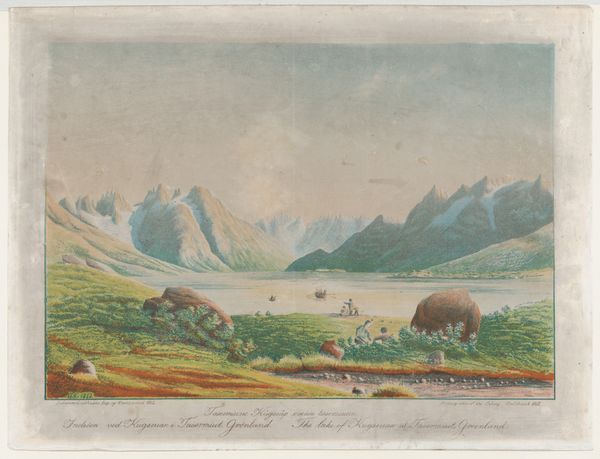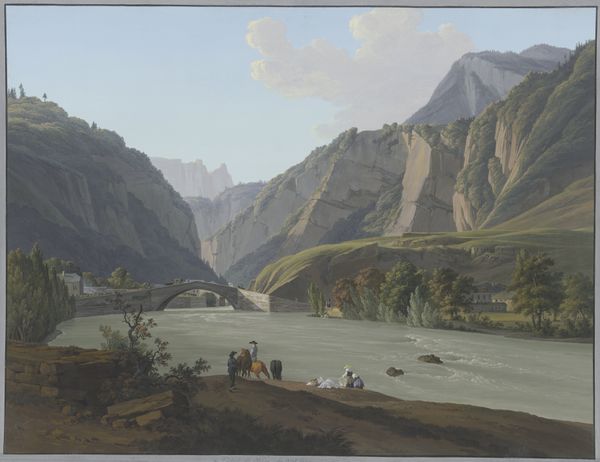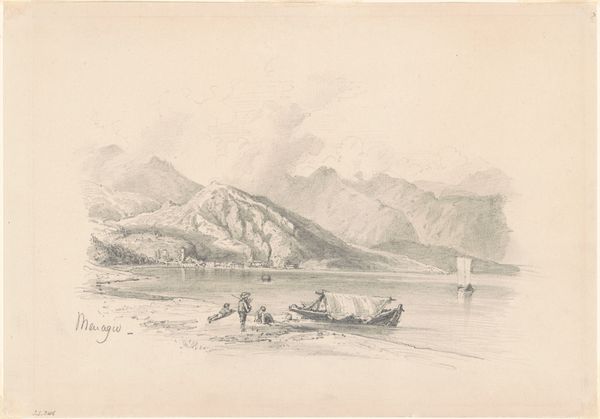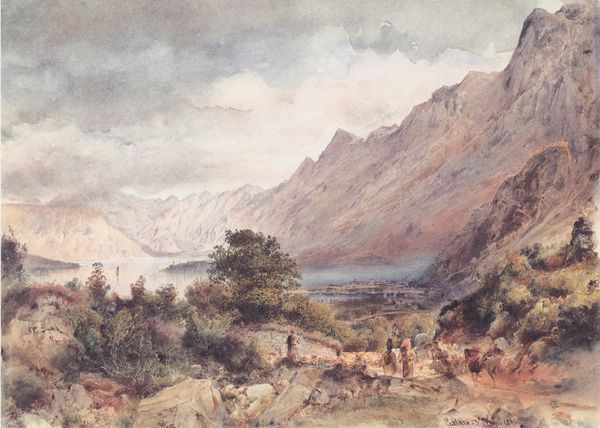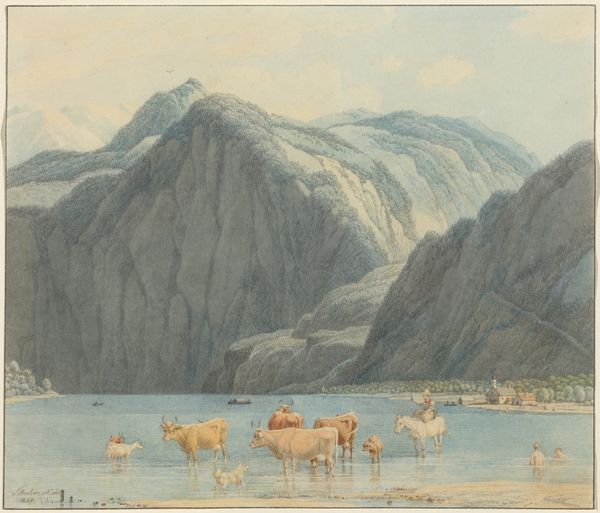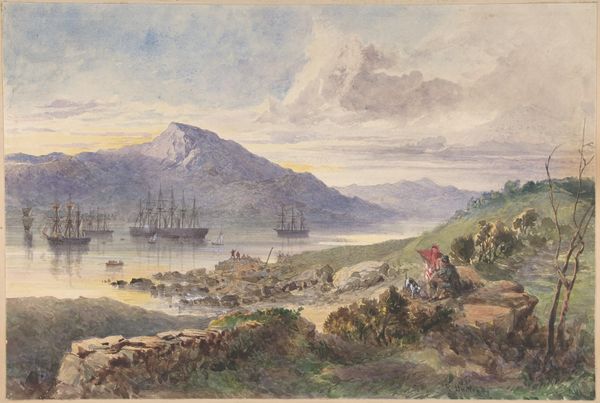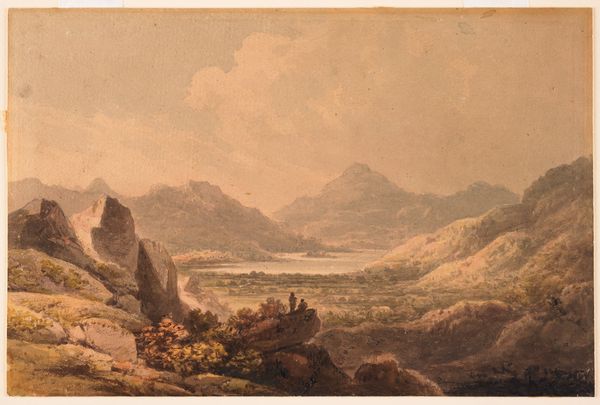
drawing, watercolor
#
drawing
#
landscape
#
watercolor
#
german
#
underpainting
Copyright: Public Domain
Curator: What immediately strikes me about this watercolour is the hazy, dreamlike quality it possesses. It’s as though Rottmann has captured not just a landscape, but a memory of one. Editor: And that haziness, for me, speaks volumes about the romantic idealization of nature prevalent at the time. The near-monochromatic, almost ghostly peaks dominate the composition, overshadowing any human presence along the shoreline of Königssee. Curator: Indeed. It’s interesting how Rottmann, who was German, chose this location, the Königssee, to create a work absent of dramatic political or social narratives. One might interpret this picture of untamed landscape and vast mountain range, created through layered applications of colour washes, as representing pure escapism during the rise of social challenges that gripped 19th century Europe. Editor: Do you think Rottmann could truly be blind to those rising political challenges when painting, especially as many viewed sublime landscape as something accessible only by privileged social classes who could freely traverse? Curator: That's fair. However, I'd be reticent to view Rottmann through a contemporary lens too sharply. The watercolour technique he employs emphasizes light and atmosphere. Editor: Yes, his skill is apparent, even remarkable. Notice the careful application of watercolours allowing for underpainting to still show through. But even that artistic choice feels rooted in how he as a cis white man is interacting with both place, representation, and memory in order to distance this location and romanticize Königssee. Curator: Ultimately, a painting like this serves as a mirror reflecting both the beauty and the complexities of our relationship with the natural world and the society to which it exists. Editor: Absolutely, and by examining its creation and reception within their historical context, we can begin to dissect not just aesthetic preferences of an artist or nation, but how broader power dynamics and ideologies intertwine with seemingly apolitical subjects like landscape.
Comments
No comments
Be the first to comment and join the conversation on the ultimate creative platform.
